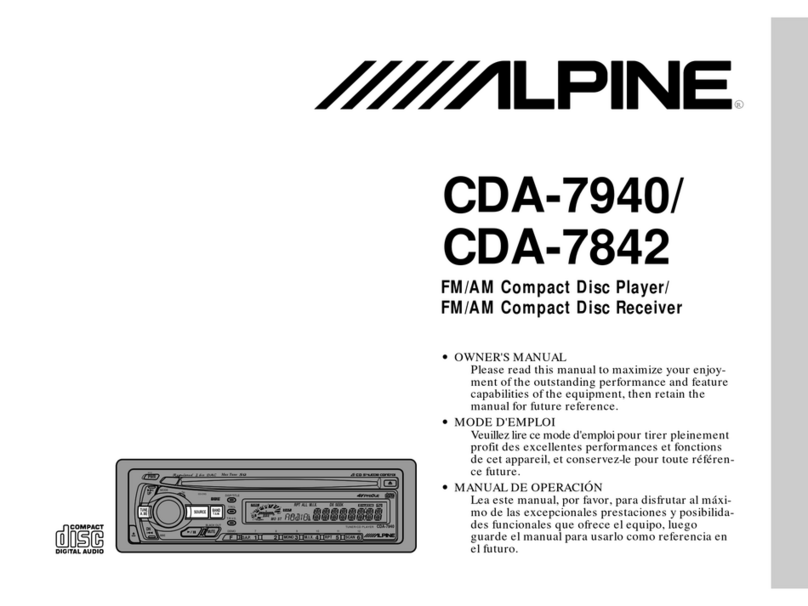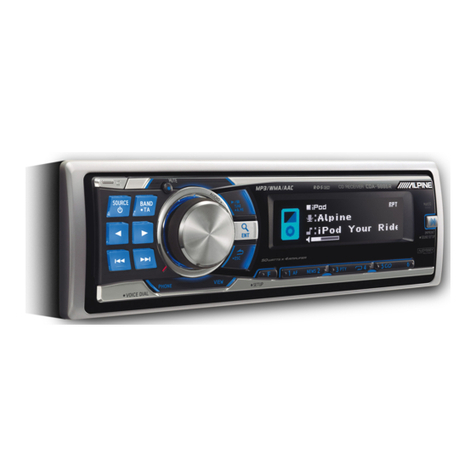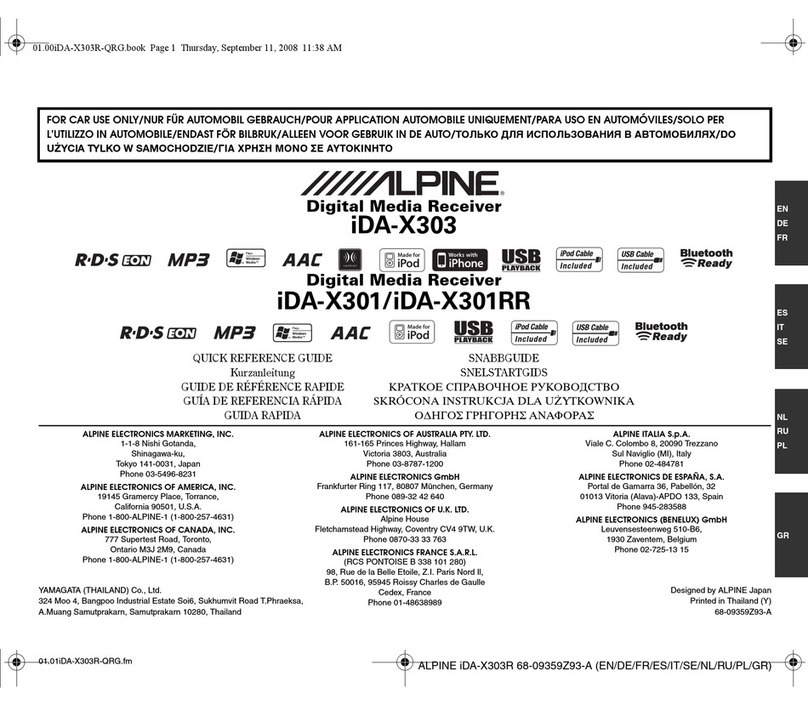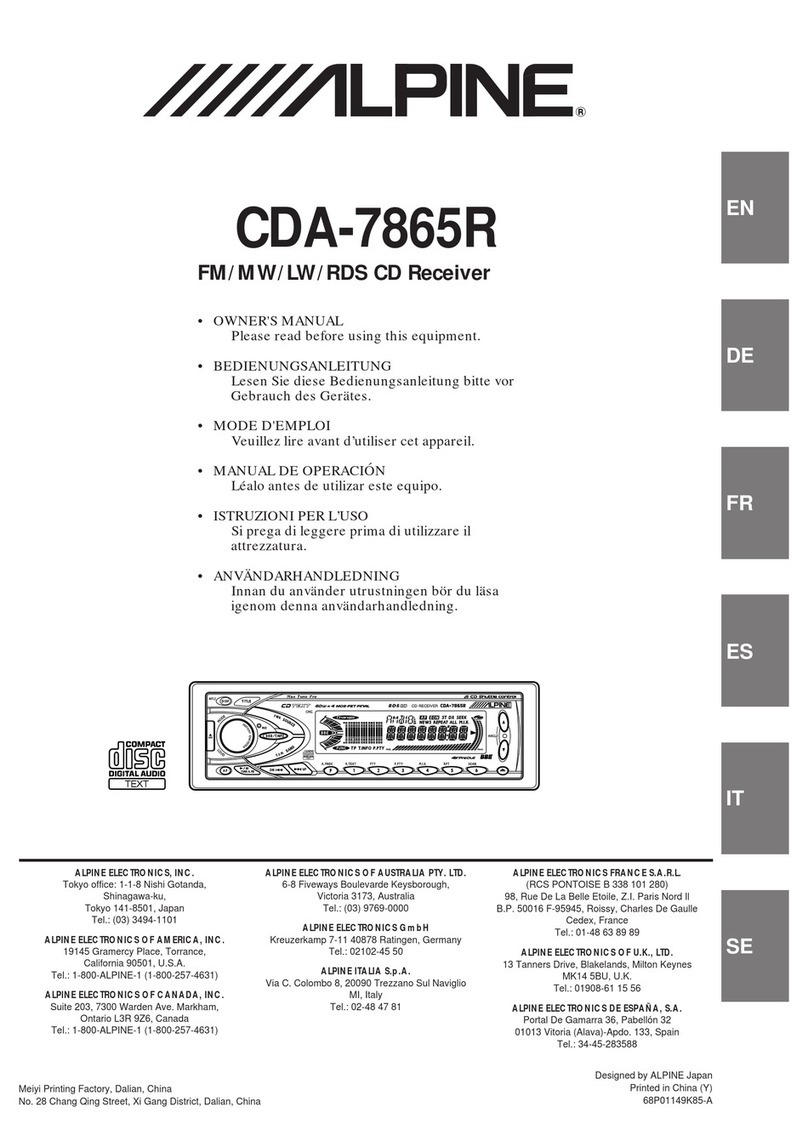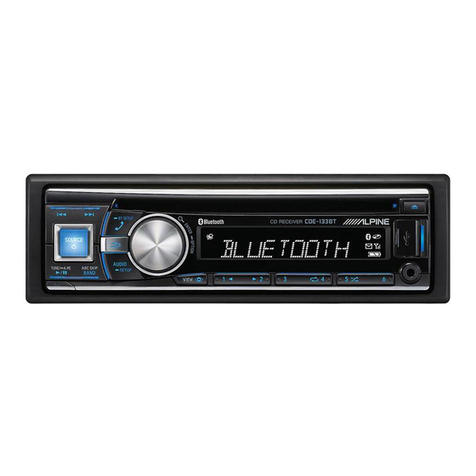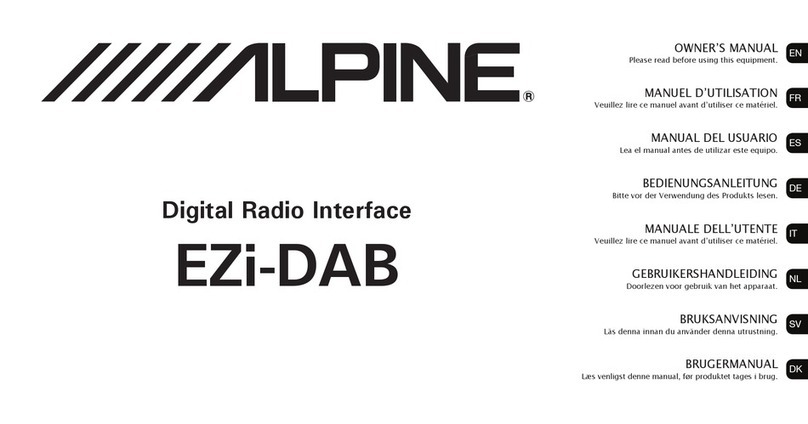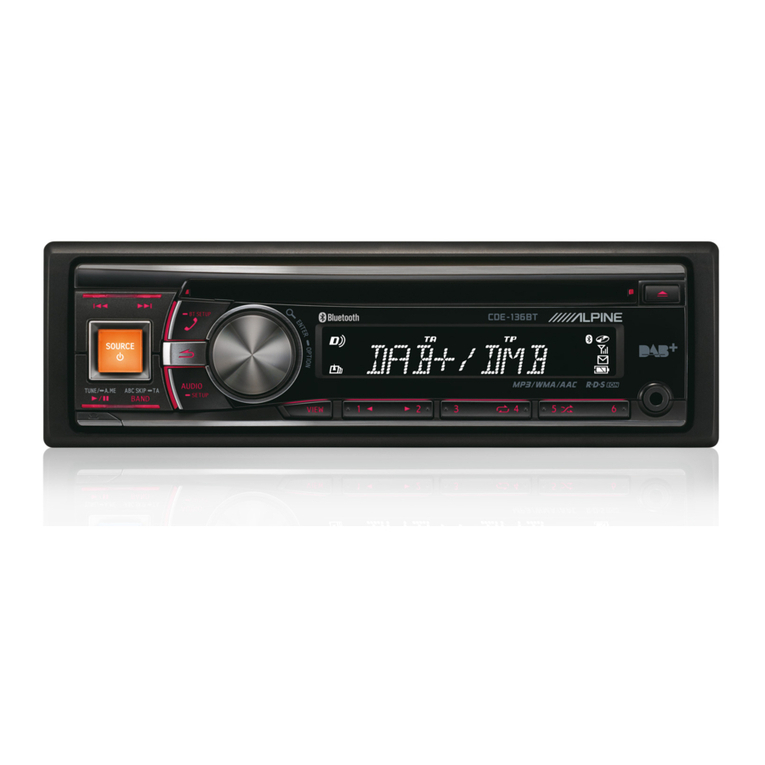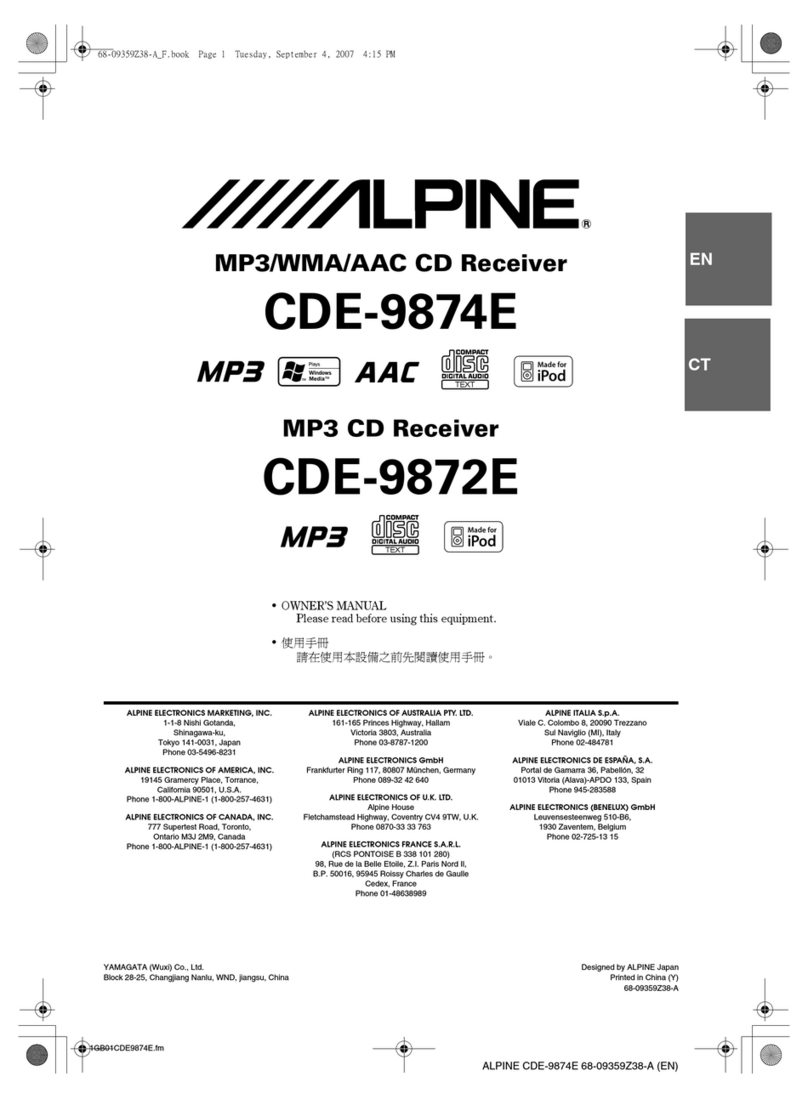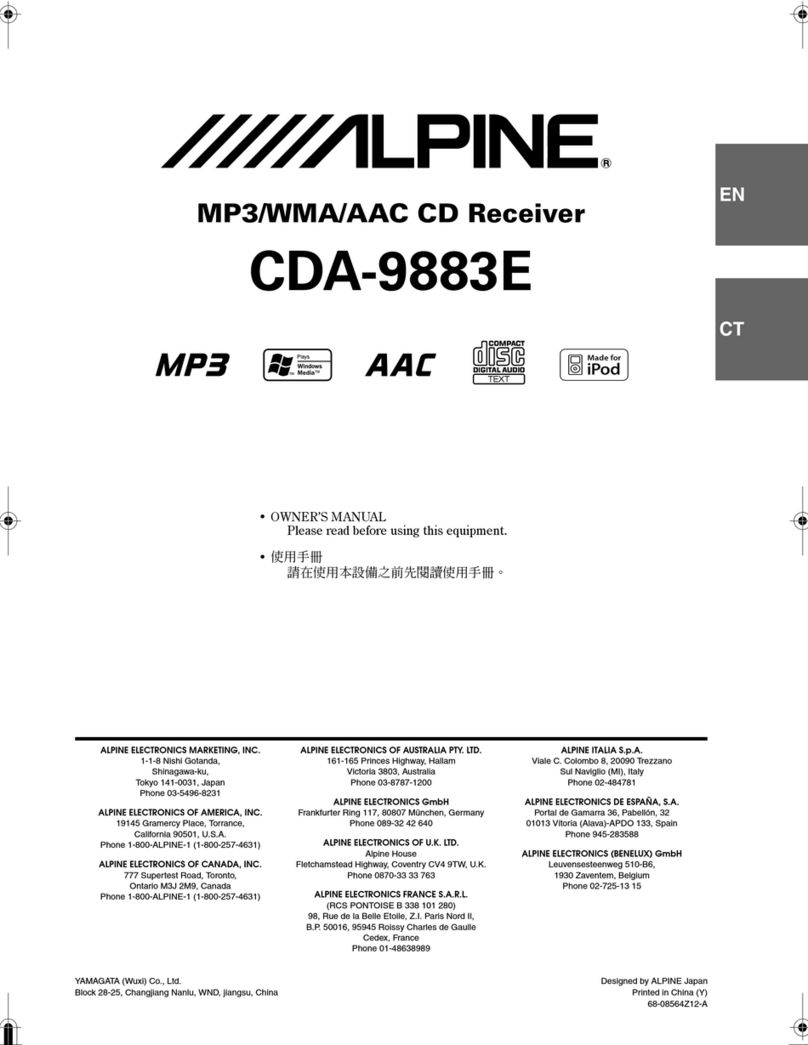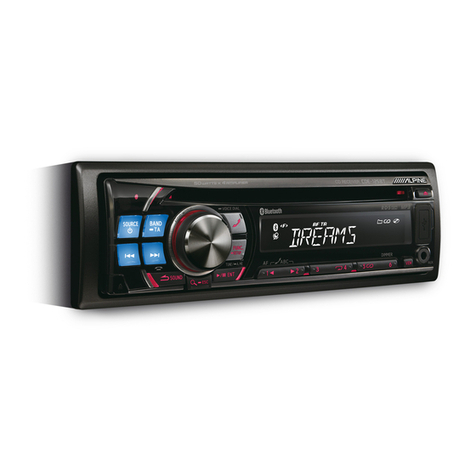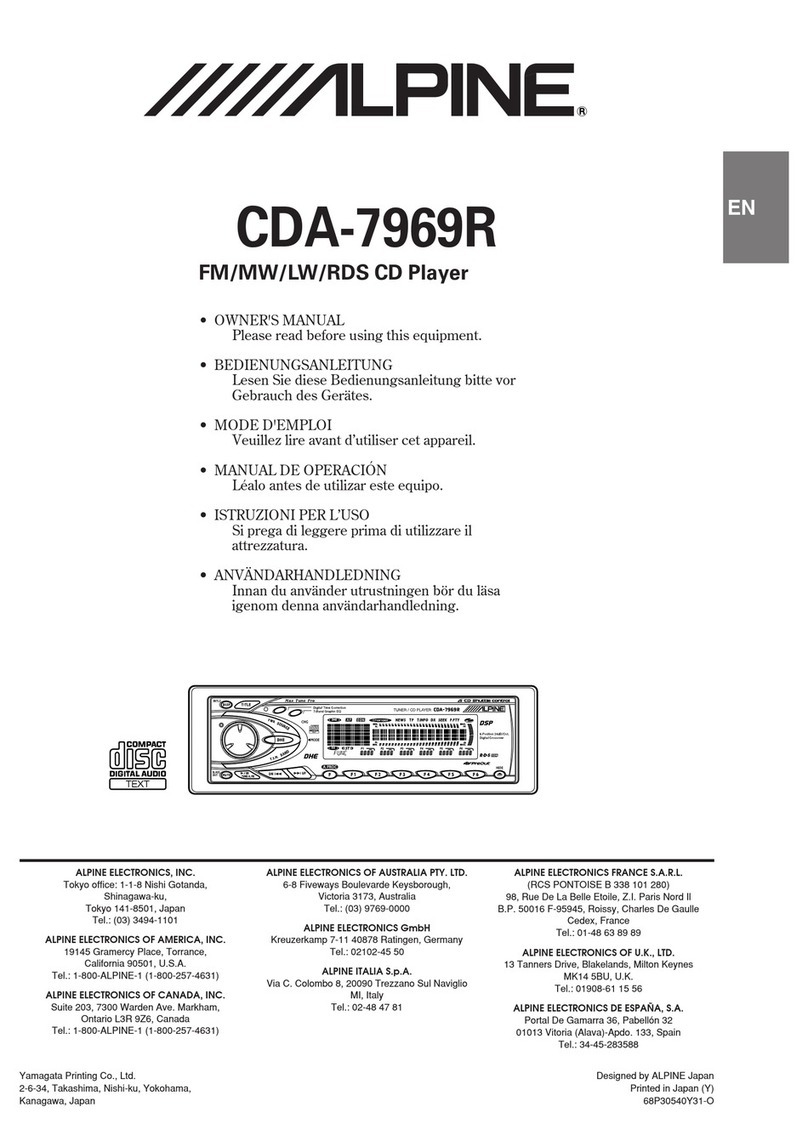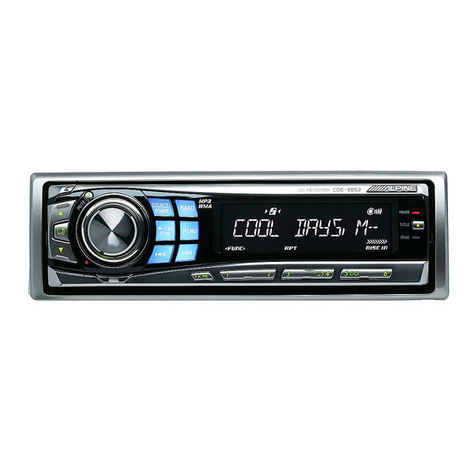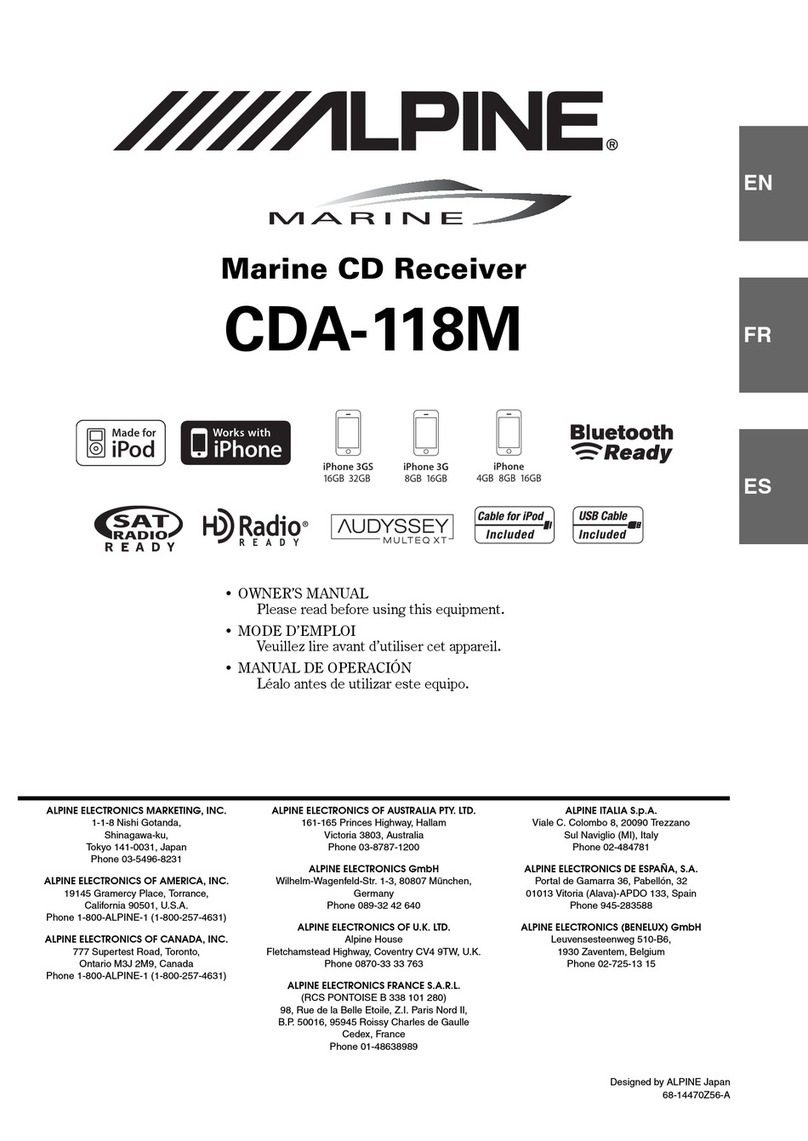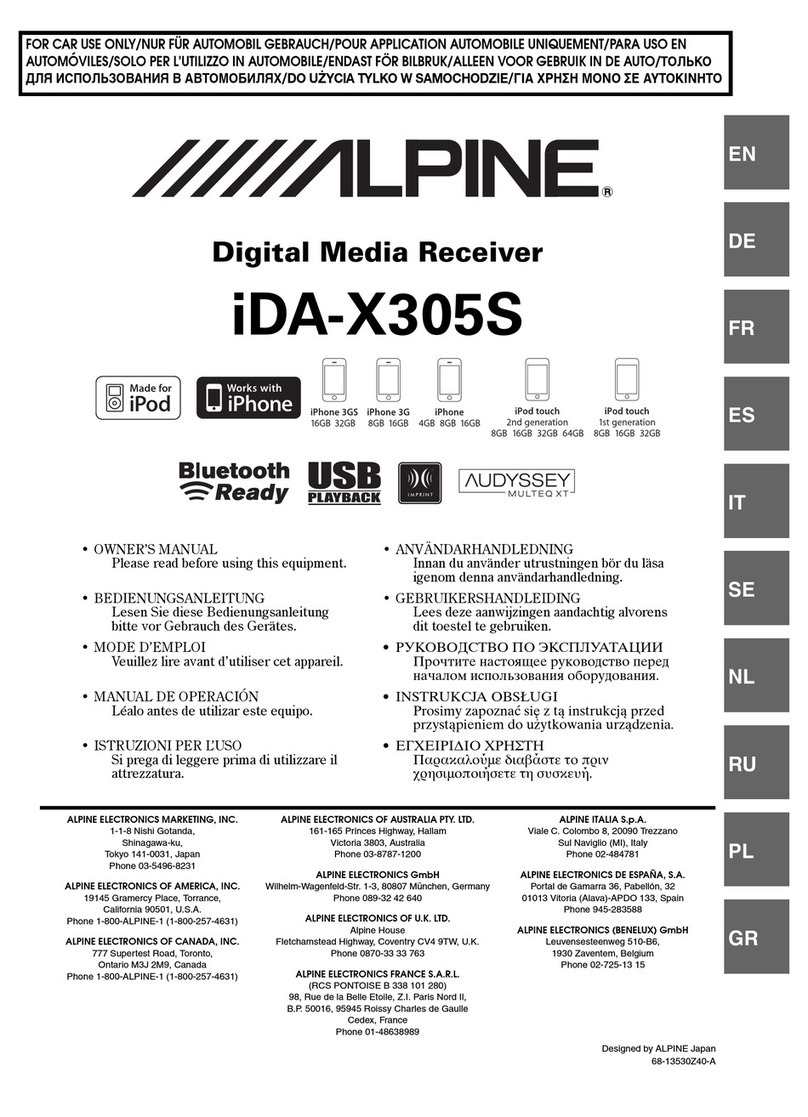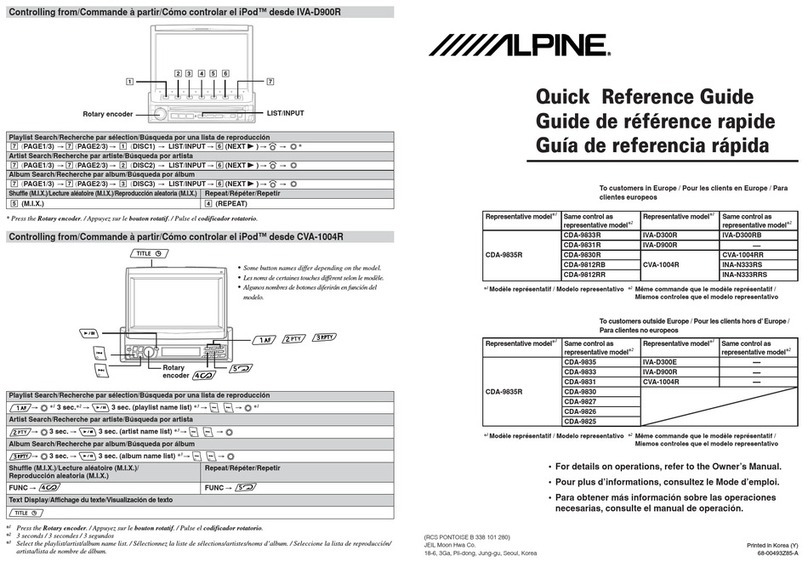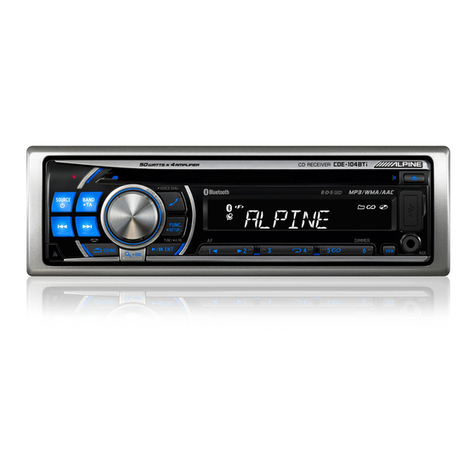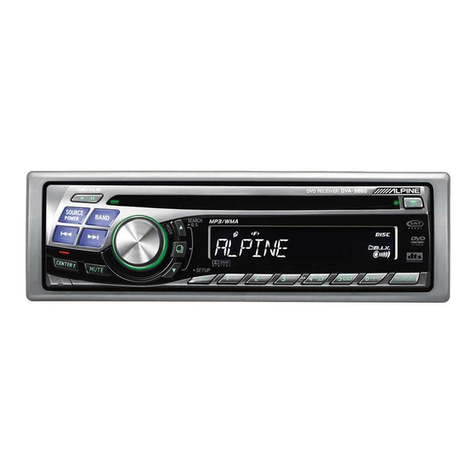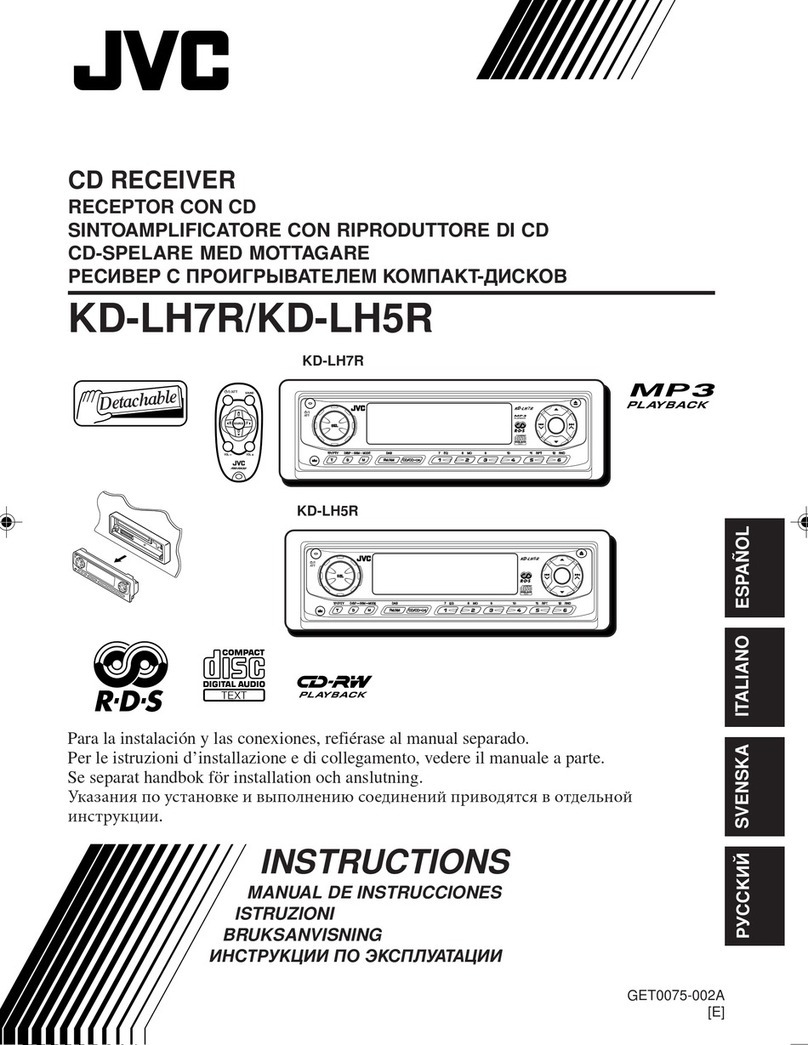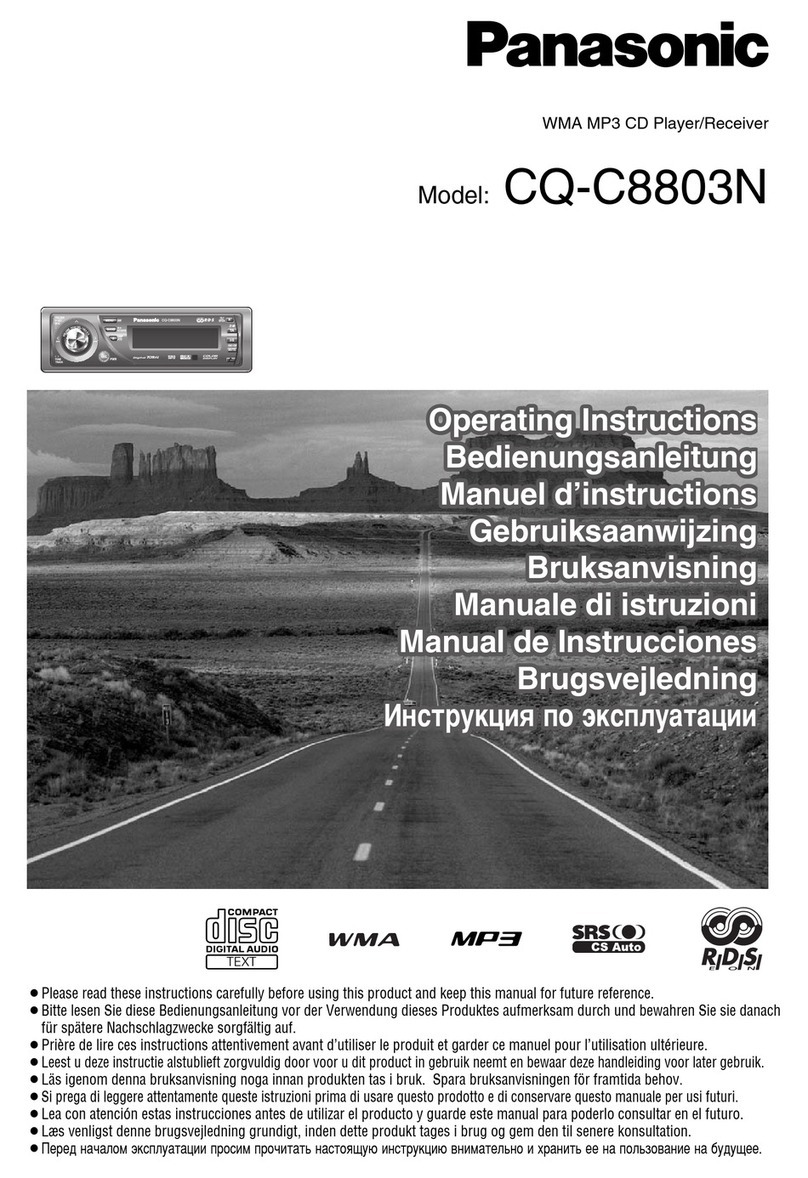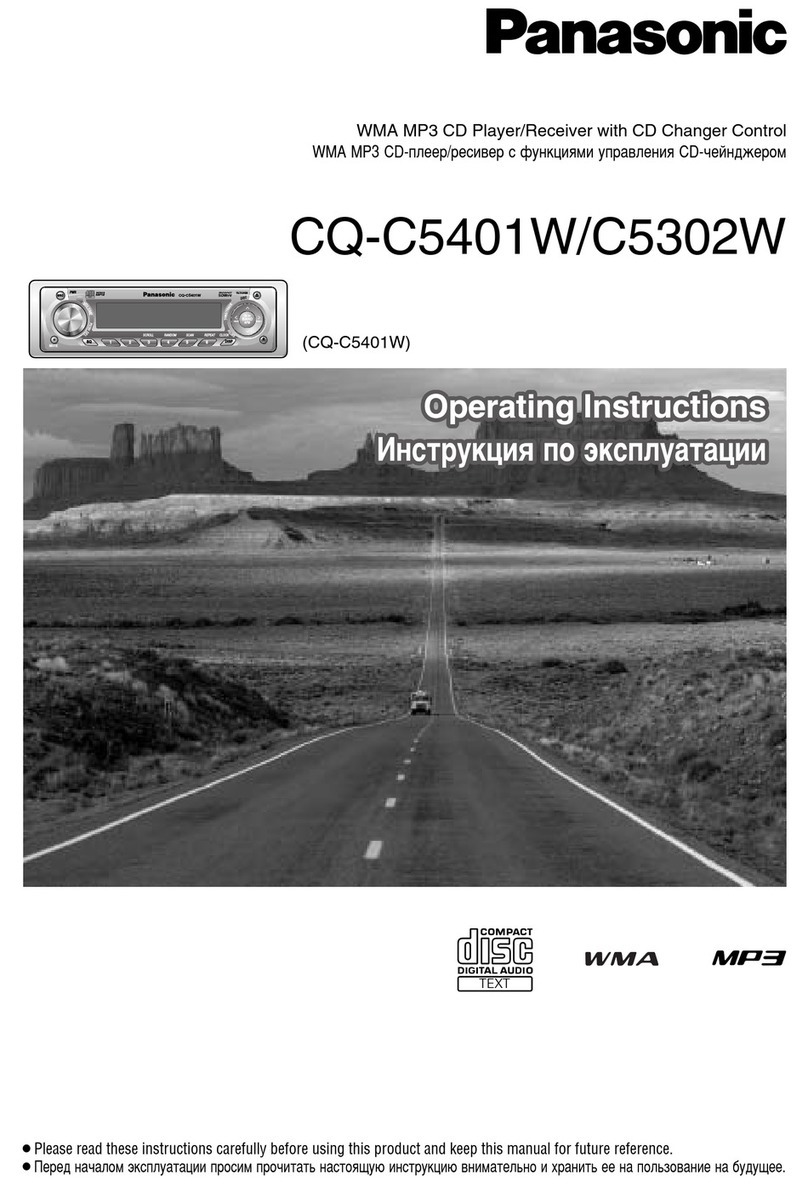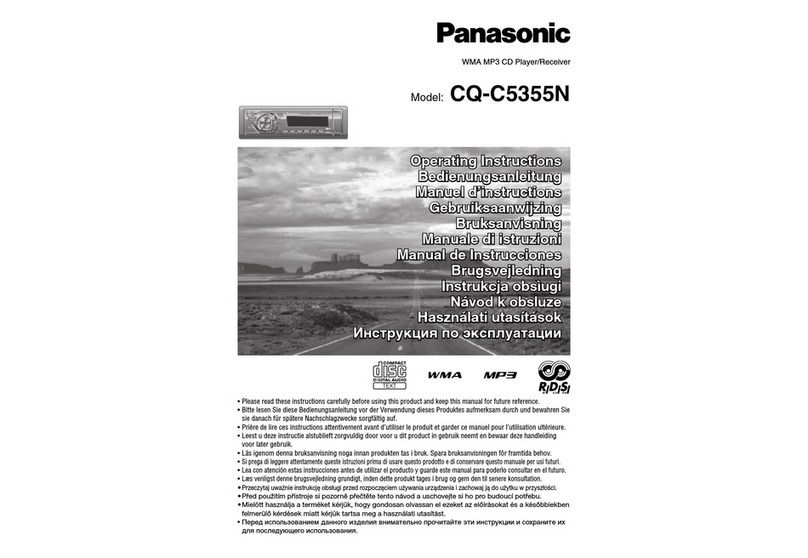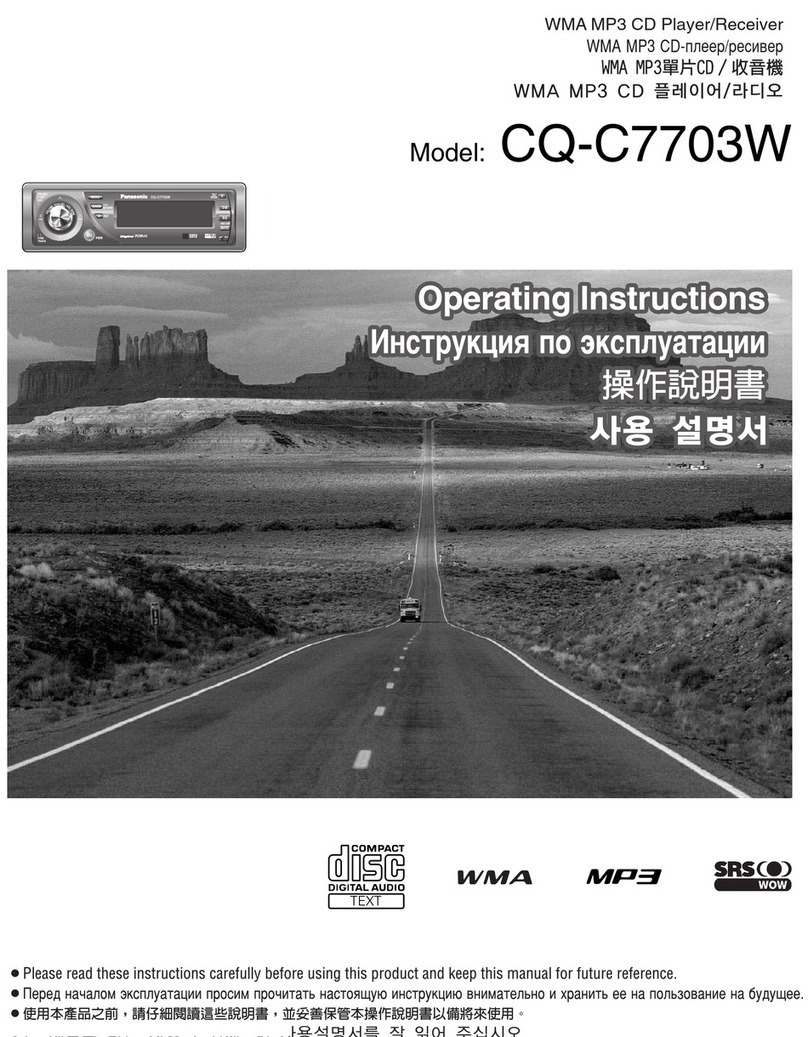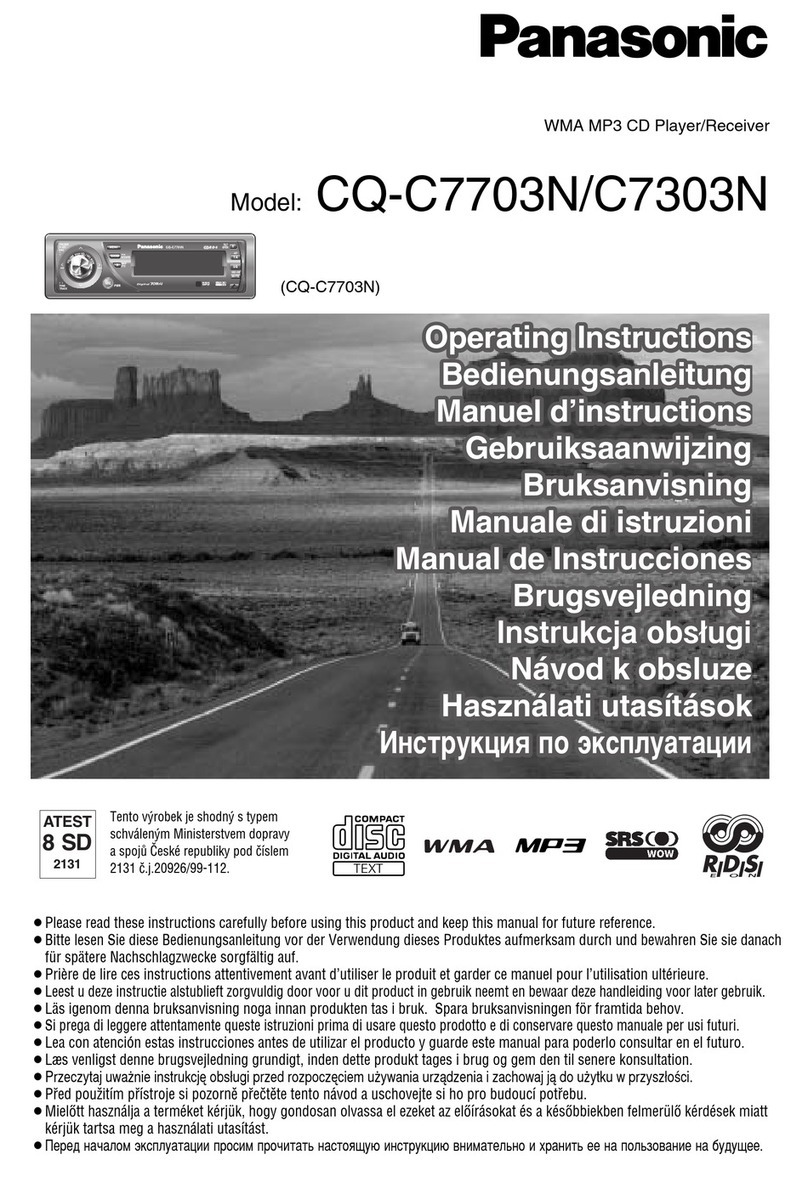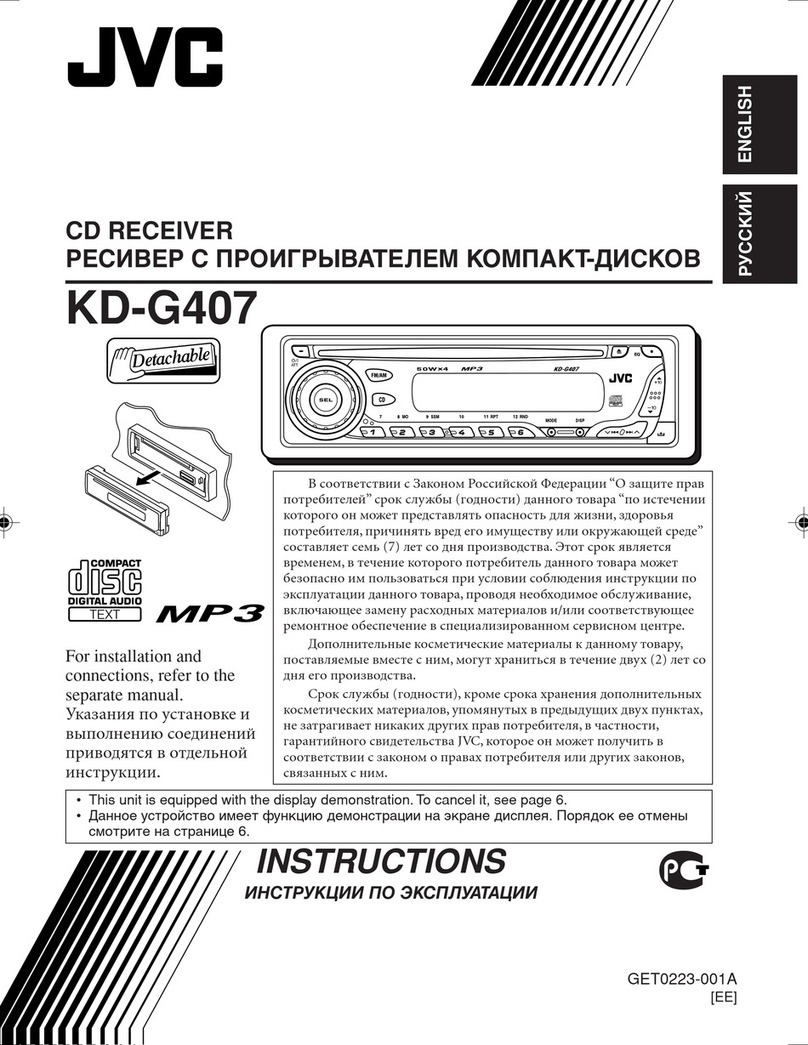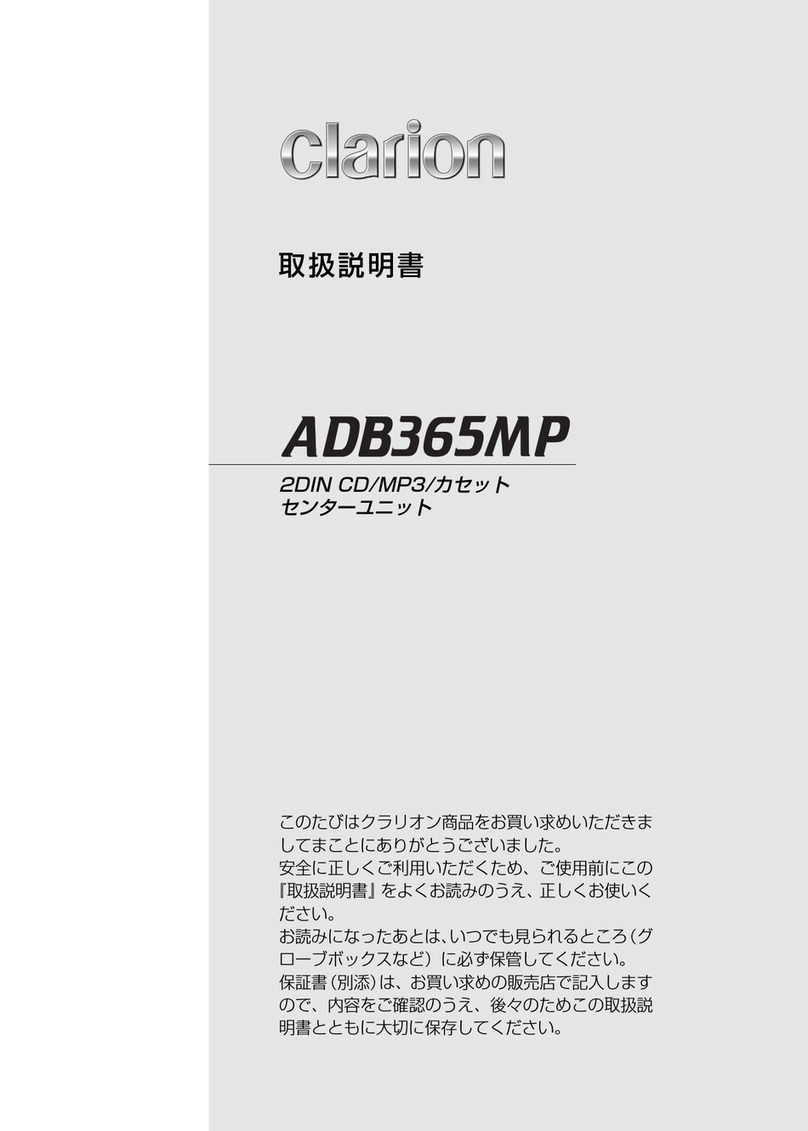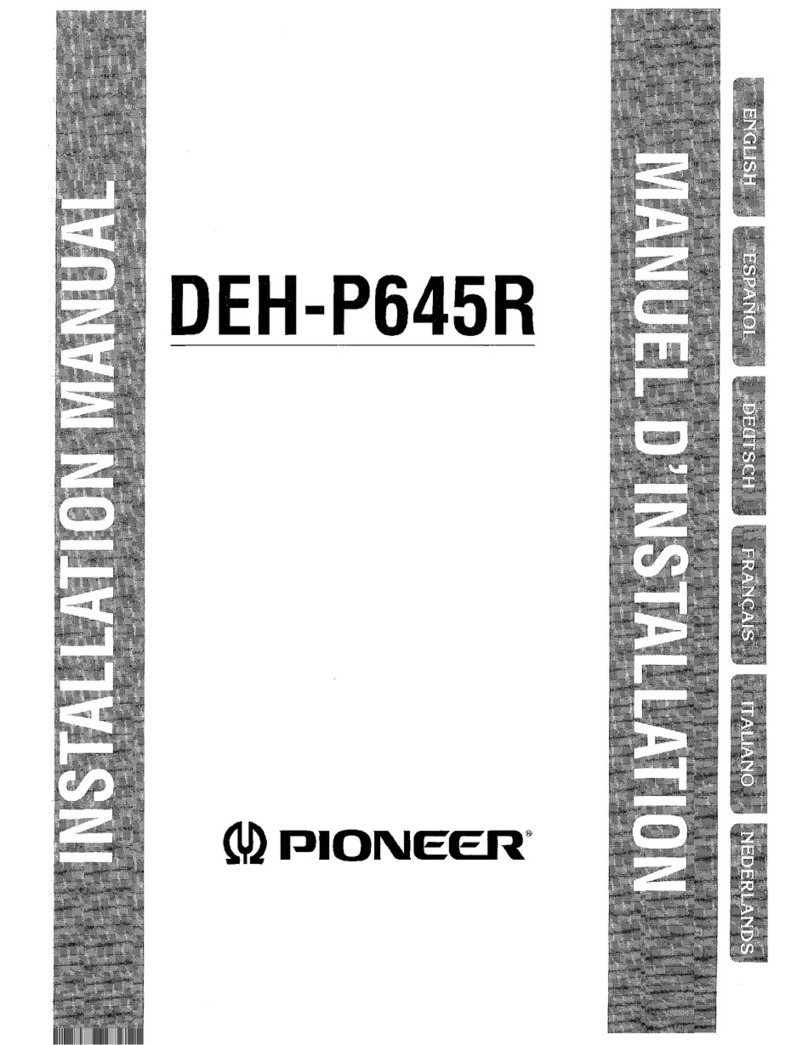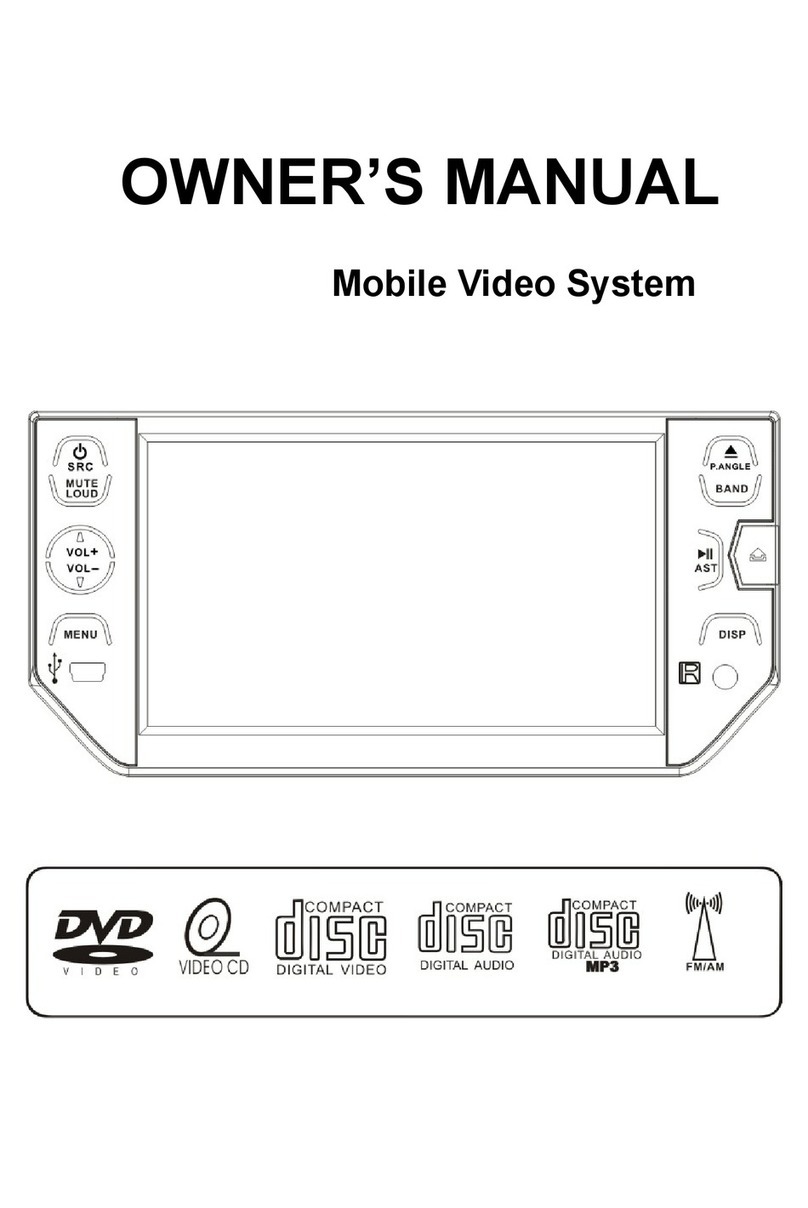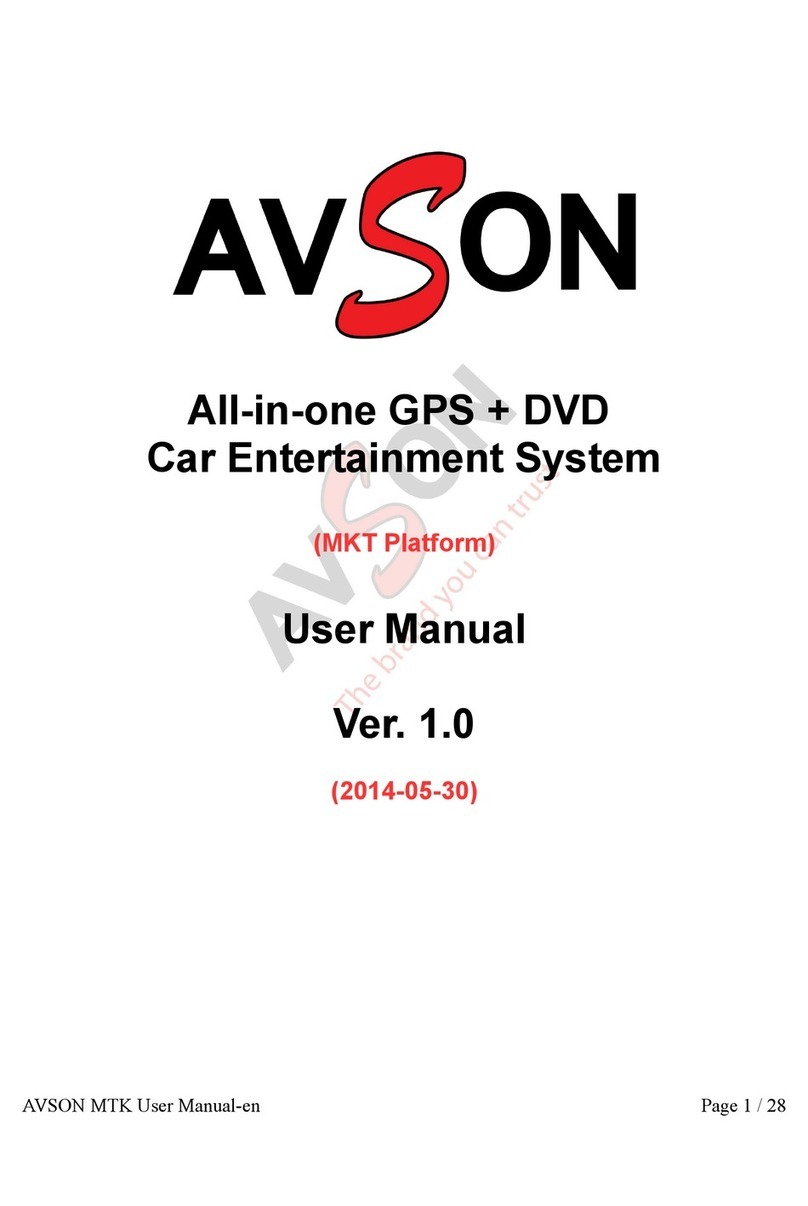USE
THIS
PRODUCT
FOR
MOBILE
12V
APPLICATIONS.
Use for other than its designed application may result in fire, electric
shock
or
other injury.
DO
NOT
PLACE
HANDS,
FINGERS
OR
FOREIGN
OBJECTS
IN
INSERTION
SLOTS
OR
GAPS.
Doing so may result in personal injury or damage to the product.
MAKE
THE
CORRECT
CONNECTIONS.
Failure to make the proper connections may result in fire
or
product
damage.
BEFORE
WIRING,
DISCONNECT
THE
CABLE
FROM
THE
NEGATIVE
BATTERY
TERMINAL.
Failure to do so may result in electric shock or injury due to electrical
shorts.
DO
NOT
ALLOW
CABLES
TO
BECOME
ENTANGLED
IN
SURROUNDING
OBJECTS.
Arrange wiring and cables in compliance with the manual to prevent
obstructions when driving. Cables or wiring that obstruct
or
hang up on
places such as the steering wheel, gear lever, brake pedals, etc. can
be
extremely hazardous.
DO
NOT
SPLICE
INTO
ELECTRICAL
CABLES.
Never
cut
away cable insulation to supply power to other equipment.
Doing so will exceed the current carrying capacity
of
the wire and
result in fire
or
electric shock.
DO
NOT
DAMAGE
PIPE
OR
WIRING
WHEN
DRILLING
HOLES.
When drilling holes in the chassis for installation, take precautions so
as not to contact, damage
or
obstruct pipes, fuel lines, tanks or
electrical wiring. Failure to take such precautions
may
result in fire.
DO
NOT
USE
BOLTS
OR
NUTS
IN
THE
BRAKE
OR
STEERING
SYSTEMS
TO
MAKE
GROUND
CONNECTIONS.
Bolts
or
nuts used for the brake
or
steering systems
(or
any other
safety-related system),
or
tanks should NEVER
be
used
for
installations
or
ground connections. Using such parts could disable
control
of
the vehicle and cause fire etc.
DO
NOT
INSTALL
IN
LOCATIONS
WHICH
MIGHT
HINDER
VEHICLE
OPERATION,
SUCH
AS
THE
STEERING
WHEEL
OR
GEARSHIFT.
Doing so may obstruct forward vision or hamper movement etc. and
results in serious accident.
UTILISER
CET
APPAREIL
POUR
DES
APPLICATIONS
MOBILES
DE
12
v.
Toute utilisation autre que
1'
application designee comporte un risque
d'
incendie, de choc electrique
ou
de blessure.
NE
PAS
INTRODUIRE
LES
MAINS,
LES
DOIGTS
Nl
DE
CORPS
ETRANGERS
DANS
LES
FENTES
ET
LES
INTERSTICES.
11
y a risque de blessures ou de dommages
a
1'
appareil.
EFFECTUER
CORRECTEMENT
LES
CONNEXIONS.
11
y a risque de blessures ou de dommages
a
l'
appareil.
AVANT
TOUTE
CONNEXION,
DEBRANCHER
LE
CABLE
DE
LA
BORNE
NEGATIVE
DE
LA
BATTERIE.
II y a risque de choc electrique ou de blessure
par
courts-circuits.
NE
PAS
COINCER
LES
CABLES
AVEC
DES
OBJETS
VOISINS.
Positionner les cables conformement au manuel de maniere
a
eviter
toute obstruction en cours de conduite.
Les
cables qui obstruent ou
depassent
a
des endroits tels que le volant, le levier de changement de
vitesses, Ia pedale de frein, etc., peuvent
s'averer
extremement
dangereux.
NE
PAS
DENUDER
LES
CABLES
ELECTRIQUES.
Ne
jamais enlever la gaine isolante pour alimenter
un
autre appareil.
II
y a risque de depassement de la capacite de courant et, partant,
d'incendie ou de choc electrique.
NE
PAS
ENDOMMAGER
DE
CONDUITES
Nl
DE
CABLES
LORS
DU
FORAGE
DES
TROUS.
Lors du forage de trous dans le chassis
en
vue de
1'
installation, veiller
a
ne pas entrer en contact, endommager ni obstruer de conduites, de
tuyaux
a
carburant ou de fils electriques. Le non-respect de cette
precaution peut entrainer un incendie.
NE
PAS
UTILISER
DES
ECROUS
Nl
DES
BOULONS
DU
CIRCUIT
DE
FREINAGE
OU
DE
DIRECTION
POUR
LES
CONNEXIONS
DE
MASSE.
Les boulons et les ecrous utilises pour les circuits de freinage et de
direction (ou de tout autre systeme de securite) ou les reservoirs ne
peuvent JAMAIS etre utilises pour I'installation
ou
la
liaison
a
Ia
masse. L'utilisation de ces organes peut desactiver le systeme de
controle du vehicule et causer un incendie, etc.
NE
PAS
INSTALLER
A
DES
ENDROITS
SUSCEPTIBLES
D'ENTRAVER
LA
CONDUITE
DU
VEHICULE,
COMME
LE
VOLANT
OU
LE
LEVIER
DE
VITESSES.
La vue vers
1'
avant pourrait etre obstruee ou les mouvements genes,
etc., et provoquer un accident grave.
4
UTILICE
ESTE
PRODUCTO
CON
APLICACIONES
MDVILES
DE
12
V.
Si se emplea para otra aplicaci6n distinta de la prevista, podria
producirse un incendio, una descarga electrica u otras lesiones.
NO
INTRODUZCA
LAS
MANOS,
LOS
DEDOS
Nl
OTROS
OBJETOS
EXTRANOS
EN
LAS
RANURAS
DE
INSERCIQN
0
EN
LAS
ABERTURAS.
Si lo hiciera, podria sufrir heridas u ocasionar daiios al equipo.
REALICE
LAS
CONEXIONES
CORRECTAMENTE.
Una conexi6n incorrecta puede producir un incendio o dafiar el equipo.
ANTES
DE
EFECTUAR
EL
CABLEADO,
DESCONECTE
EL
CABLE
DEL
TERMINAL
NEGATIVO
DE
LA
BATERIA.
De no hacerlo asf, podria ocasionar una descarga electrica o heridas
debido a cortocircuitos electricos.
IMPIDA
QUE
LOS
CABLES
SE
ENREDEN
CON
LOS
OBJETOS
SITUADOS
ALREDEDOR.
Disponga la instalaci6n electrica y los cables conforme a lo descrito en
el manual para evitar obstaculos durante laconducci6n. Los cables que
obstaculizan
la
conducci6n o que cuelgan de partes del vehiculo como
el volante de direcci6n,
la
palanca de cambios, los pedales de freno,
etc., se consideran extremadamente peligrosos.
NO
EMPALME
CABLES
ELECTRICOS.
Nunca corte el aislamiento de un cable para suministrar energfa a otro
equipo. Esto hace que
la
capacidad portadora del cable se supere y
puede ser
Ia
causa de incendios o descargas electricas.
EVITE
DANAR
LOS
TUBOS
Y
EL
CABLEADO
CUANDO
TALADRE
AGUJEROS.
Si taladra agujeros en el chasis durante Ia instalaci6n, tome las
precauciones necesarias para no rozar, daiiar u obstruir los tubos, las
tuberfas de combustible, los dep6sitos o el cableado electrico. De lo
contrario, podria provocar un incendio.
NO
UTILICE
TUERCAS
0
PERNOS
EN
EL
SISTEMA
DE
FRENOS
0
DE
DIRECCIDN
PARA
REALIZAR
LAS
CONEXIONES
A
MASA.
Los pemos o tuercas empleados en los sistemas de freno o de direcci6n
(o en cualquier otro sistema relacionado con
la
seguridad del vehiculo),
o los dep6sitos,
NUNCA
deben utilizarse para instalaciones de
cableado o conexi6n a masa. Si utiliza tales partes podni incapacitar el
control del vehfculo y provocar un incendio, etc.
NO
INSTAtE
EL
EQUIPO
EN
LQGARES
QUE
PUEDAN
INTERFERIR
CON
LA
OPERACION
DEL
VEHICULO,
COMO
EL
VOLANTE
DE
DIRECCIQN
0
LA
CAJA
DE
CAMBIOS
DE
VELOCIDAD.
Esto podria obstaculizarla visibilidad y dificultar el movimiento, etc. y
provocar accidentes graves.
